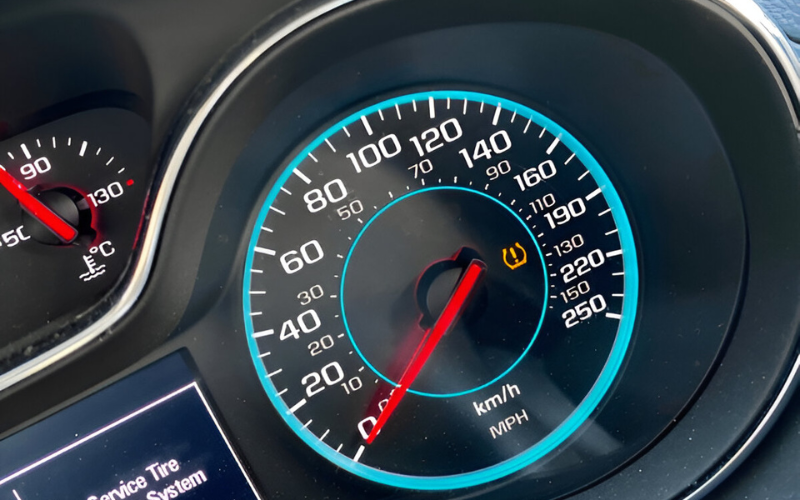Introduction
Seeing the “service tire monitor system” warning pop up on your dashboard can be confusing, especially if everything seems fine with your tires. But don’t worry—this alert is a helpful reminder that something in your tire monitoring system needs attention. In this article, we’ll explore what the service tire monitor system is, why the alert shows up, and what you can do to fix or prevent issues.
What the Service Tire Monitor System Actually Does
The service tire monitor system is part of your car’s safety technology designed to keep track of your tire pressure. If the pressure drops too low or the system detects a fault, it sends you a warning so you can take action before a flat tire or blowout happens.
The Role of TPMS in Modern Vehicles
TPMS stands for Tire Pressure Monitoring System. It constantly checks the air pressure in your tires and alerts you when one or more tires are significantly under-inflated. This system is not only there for your safety but also helps improve fuel efficiency and tire lifespan.
Modern cars are equipped with TPMS because maintaining proper tire pressure can reduce the risk of accidents, improve your car’s handling, and help with better gas mileage.
Direct vs. Indirect Monitoring Systems
There are two types of tire monitoring systems:
- Direct TPMS uses sensors in each wheel to send real-time pressure data to your car’s computer.
- Indirect TPMS doesn’t use physical sensors. Instead, it works with your car’s ABS or wheel speed sensors to detect changes in tire rotation patterns, which can indicate under-inflation.
Both systems serve the same purpose but in different ways. The service warning can appear on either system when a fault is detected.
Reasons the Service Tire Monitor Warning Might Appear
When your dashboard says “service tire monitor system,” it doesn’t always mean something’s wrong with the tires themselves. Often, the problem lies in the sensors or system software.
Faulty or Low Battery Sensors
In direct TPMS setups, each sensor has a built-in battery that can wear out over time. Once the battery dies, the system may stop receiving signals, triggering the service alert.
Sensors can also fail due to physical damage, corrosion, or manufacturing defects.
Damaged Tires or Pressure Fluctuations
A drop in tire pressure from a slow leak, cold weather, or road damage can trigger the system. If you’ve recently hit a pothole or curb, your sensor might detect a change even if the tire seems fine to the eye.
System Communication Errors
Sometimes, it’s not the sensors at all. The control module or software that processes the tire data might glitch, especially after a dead battery or if tires were rotated without recalibrating the system.
How to Respond When the Warning Comes On
The best response depends on the situation—but there are steps you can take whether you’re a DIY car owner or someone who prefers the help of a mechanic.
Quick DIY Checks You Can Do
Start by checking all four tires manually using a tire pressure gauge. Compare the readings to the recommended pressure listed on your driver’s door jamb or in the owner’s manual. Inflate or deflate tires as needed.
Sometimes, the warning will go away after pressure correction, but not always.
When a Reset Might Fix It
Many vehicles allow you to reset or recalibrate the TPMS system using a dashboard button or through the settings menu. If the system had a momentary error, this simple step might be all that’s needed.
When It’s Time for Professional Help
If you’ve checked the pressure, reset the system, and the warning still remains, it could be a sensor failure or internal system problem. A mechanic can scan your vehicle’s system using specialized tools and replace any faulty components.
Resetting or Reprogramming the Tire Monitor System
Depending on your car’s make and model, there are different ways to clear the service warning and recalibrate the system.
Steps for Common Vehicle Brands
Each manufacturer handles TPMS differently. For example, GM vehicles often require a manual relearn process, while Toyota systems may reset automatically after tire pressure is restored.
Your owner’s manual will usually explain how to reset or relearn the system. If not, a dealership or repair shop can do it quickly using the correct diagnostic tools.
Using a TPMS Relearn Tool (If Needed)
Some cars need a TPMS relearn tool, especially after tire rotations, replacements, or sensor changes. These handheld devices can communicate with the sensors and help the system recognize their current positions.
These tools are available online or at auto parts stores and can be useful if you maintain your vehicle yourself.
Tips to Keep Your Tire Monitor System Running Smoothly
Taking a few preventive steps can reduce the chances of seeing the service tire monitor system warning in the future.
Routine Tire and Sensor Maintenance
Have your tire pressure checked monthly and before long trips. If your car uses direct TPMS, ask your mechanic to inspect the sensors during tire replacements or rotations.
When replacing tires, make sure the TPMS sensors are transferred carefully or replaced if worn.
Seasonal Pressure Changes and Sensor Accuracy
Cold weather can cause tire pressure to drop, even if your tires aren’t leaking. When seasons change, especially in colder climates, keep an eye on your tire pressure and consider recalibrating the TPMS if necessary.
Conclusion
The service tire monitor system plays a key role in keeping your vehicle safe and efficient. While the warning might seem annoying at first, it’s actually your car’s way of protecting you. By understanding how the system works, knowing how to respond, and staying on top of tire maintenance, you can avoid unexpected problems and drive with greater peace of mind.
FAQ
Q1: What triggers a service tire monitor system alert?
The alert is triggered by low tire pressure, faulty sensors, dead sensor batteries, or internal system malfunctions.
Q2: Can I reset the system myself or do I need a mechanic?
Many vehicles allow you to reset the system manually, but if the warning persists, a mechanic can diagnose sensor or module issues.
Q3: How long do TPMS sensors typically last?
Most TPMS sensors last 5–10 years, depending on the vehicle, usage, and environmental conditions.
Q4: What happens if I ignore the warning for too long?
Ignoring the alert could lead to driving on underinflated tires, increasing the risk of blowouts, poor fuel economy, or uneven tire wear.

